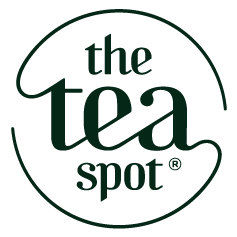With January being national Hot Tea Month, loose leaf tea is getting a lot of attention. For those of you who have some questions as to where to start and which tea might be right for you, this post is for you :)
Many people are surprised to learn that all teas, white, green, oolong and black, are made from the leaves of the same plant: Camellia sinensis.
While weather conditions and soil contribute to the final taste of the tea, the significant differences of tea type develop in the oxidation process of the leaves. Oxidation begins a process of drying and withering. A black tea is fully oxidized, causing it to turn black, while a white tea is barely oxidized at all, thus retaining its soft, silvery down.
Pu’erh teas are aged and fermented. 60–70 mg of caffeine per 8 oz cup.
Black teas are fully oxidized teas. 40 – 60 mg of caffeine per 8 oz cup.
Oolong teas are semi–oxidized, which places them mid–way between green and black teas. The caffeine content and antioxidant level is also mid–way between that of green and black teas, 25 – 35 mg caffeine/8 oz cup.
Green tea leaves are only very slightly oxidized. 20 – 30 mg caffeine/8 oz cup.
White teas are the least processed of all teas. They release the least amount of caffeine of all teas, 10-15 milligrams per 8 oz cup.
Sipping a cup of tea at every afternoon will begin to bring you some of the feelings of well-being from tea, but to reap the full protective rewards of loose leaf, you need to drink 32 to 64 oz a day. This level of tea consumption is not uncommon in many parts of the world, but for most Americans it probably represents a significant shift.
So in short, be it white, green, oolong or black – or from India, China, Japan or Sri Lanka – you can drink up and feel good about it!

Morning pu’erh steep in my kitchen
